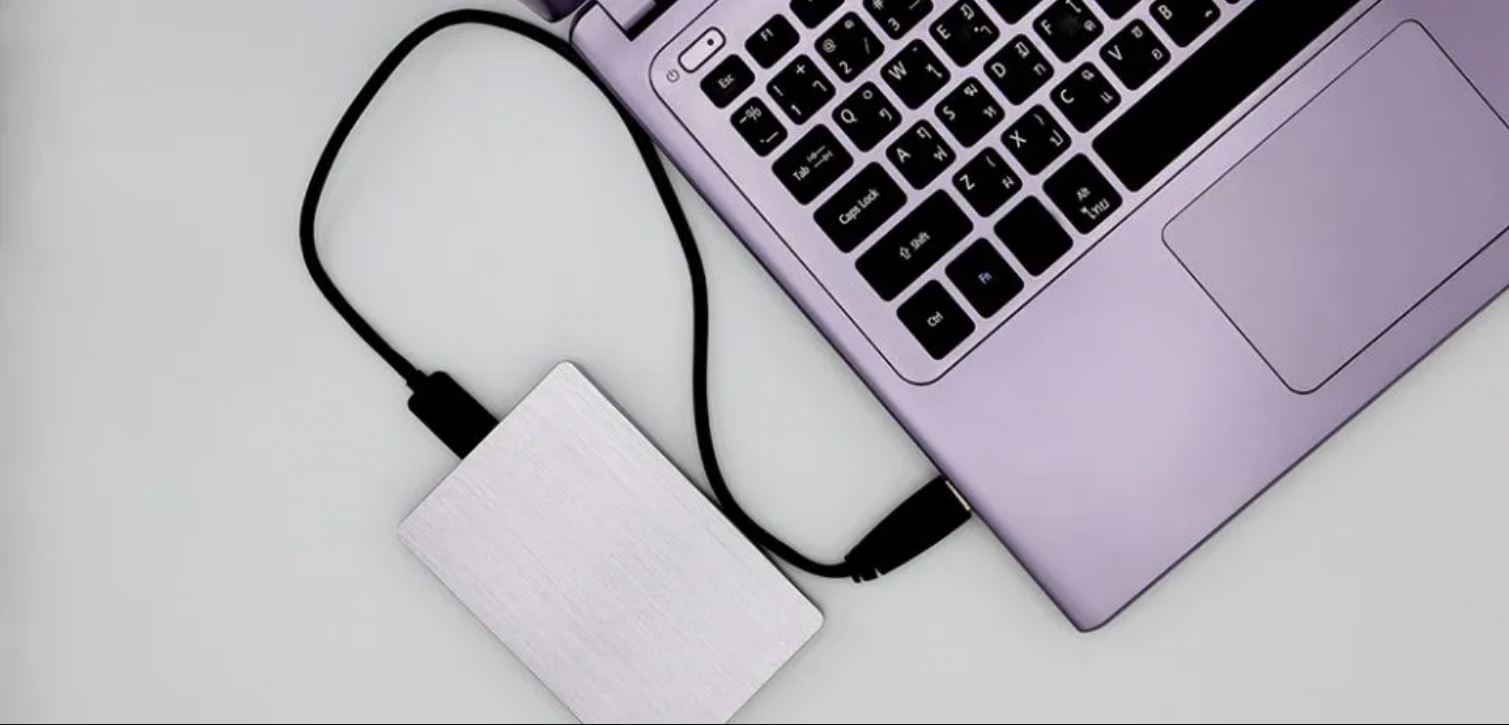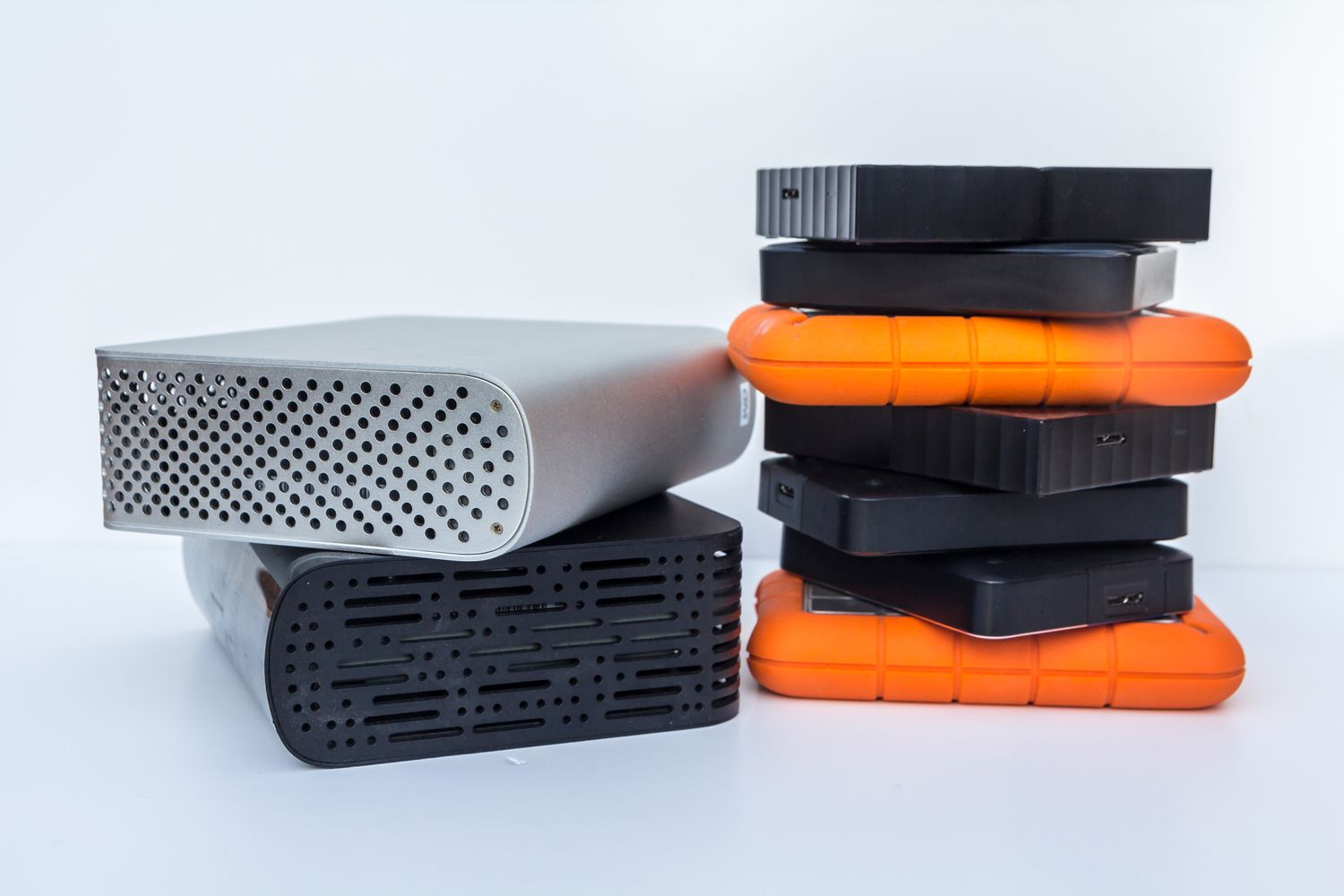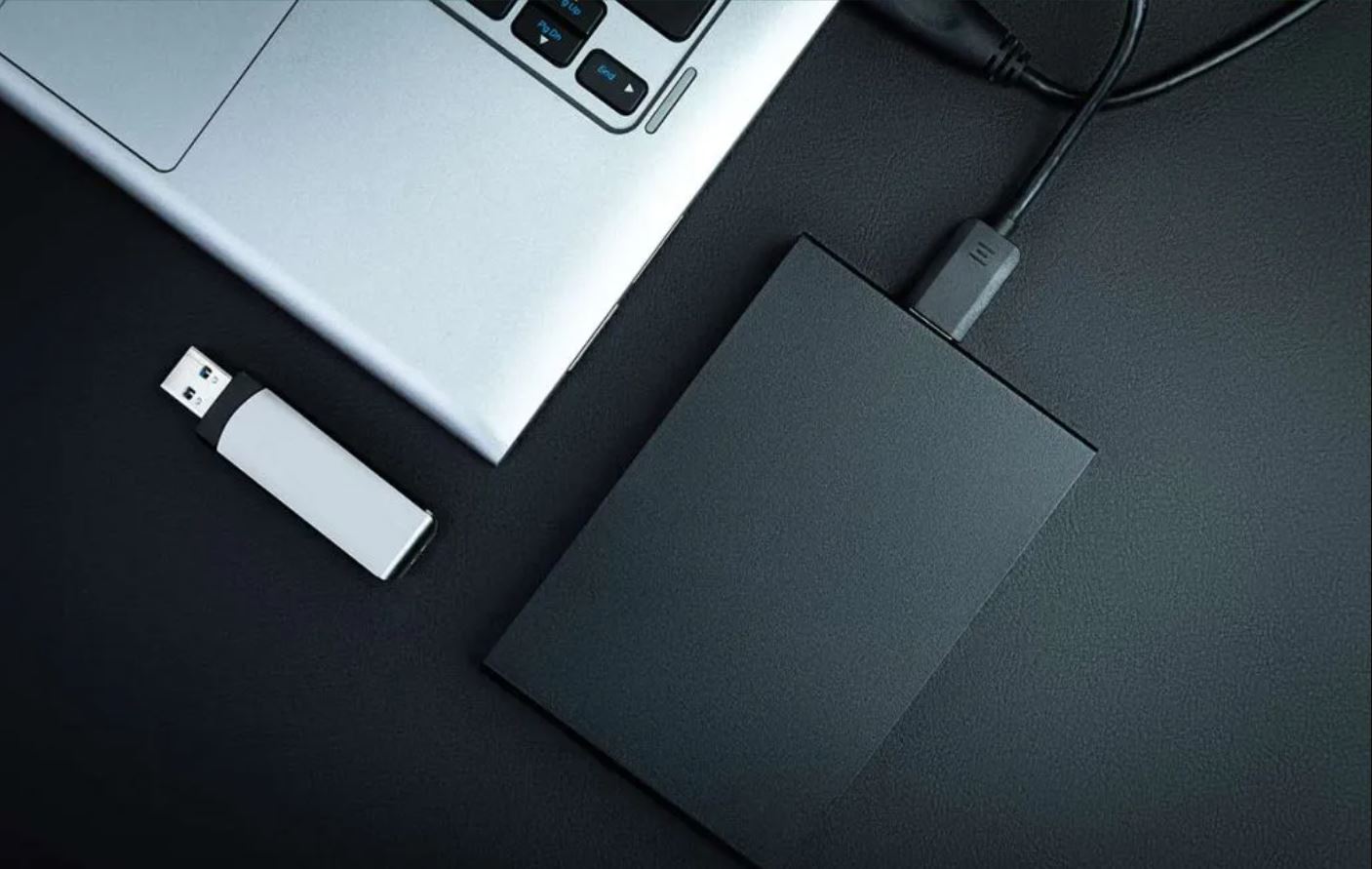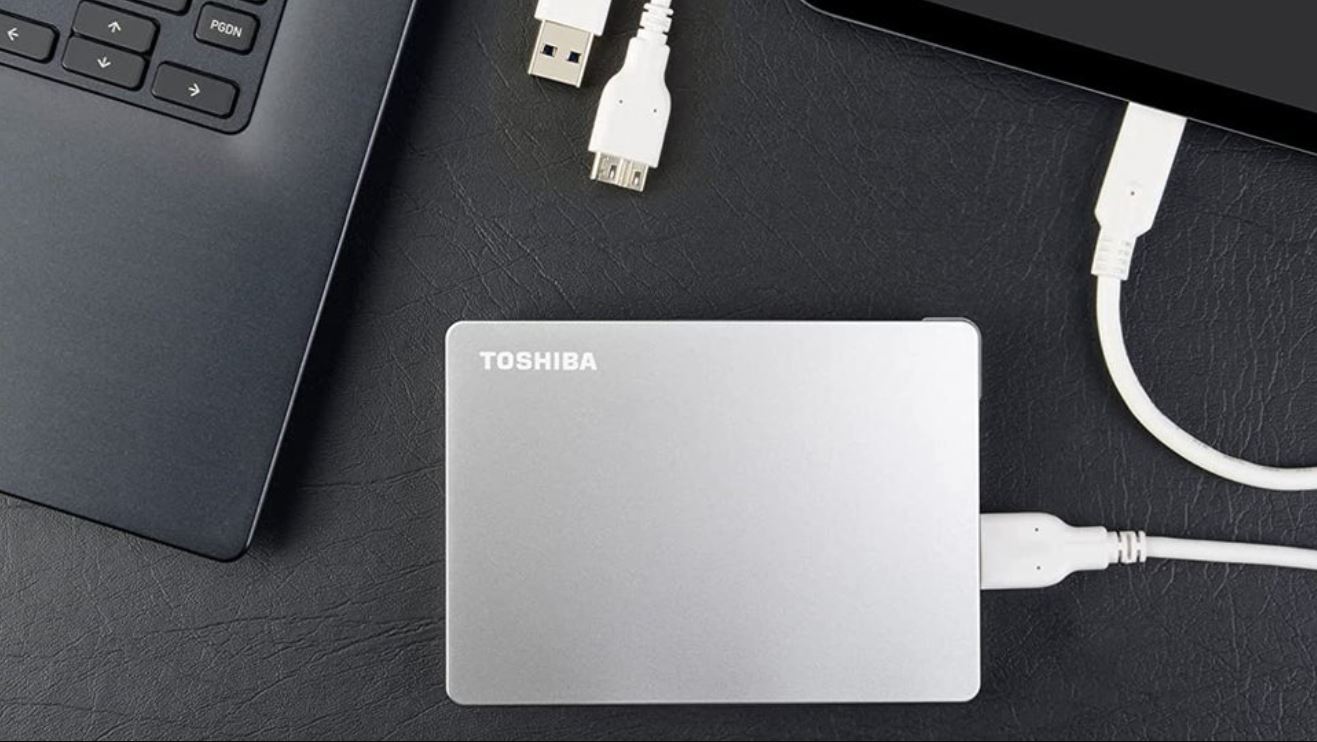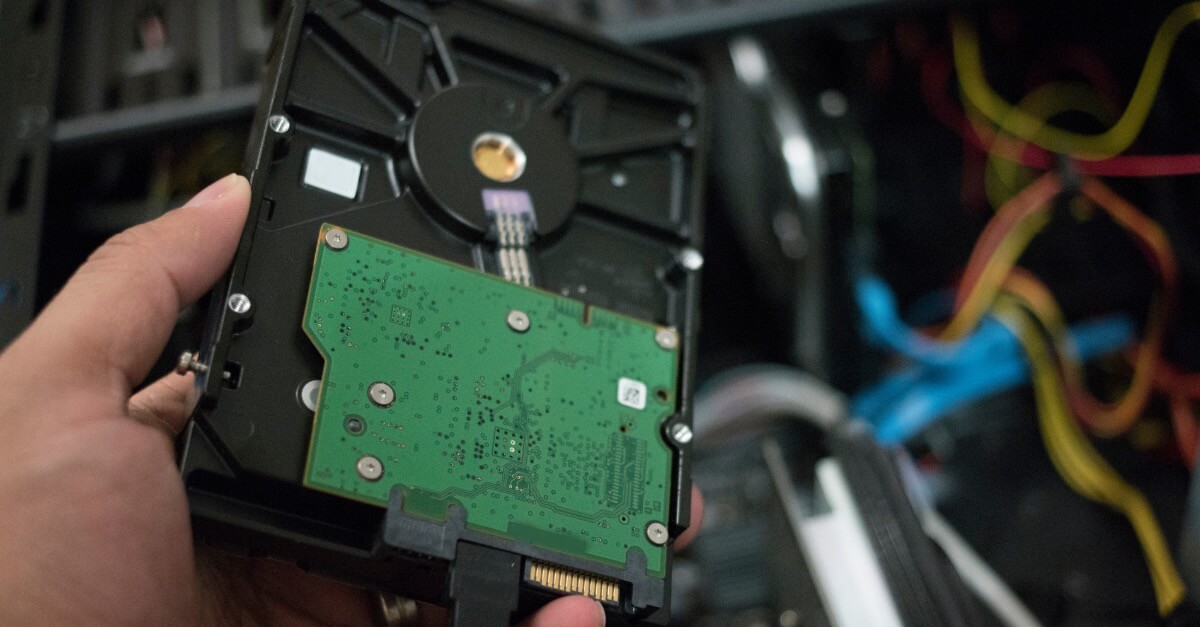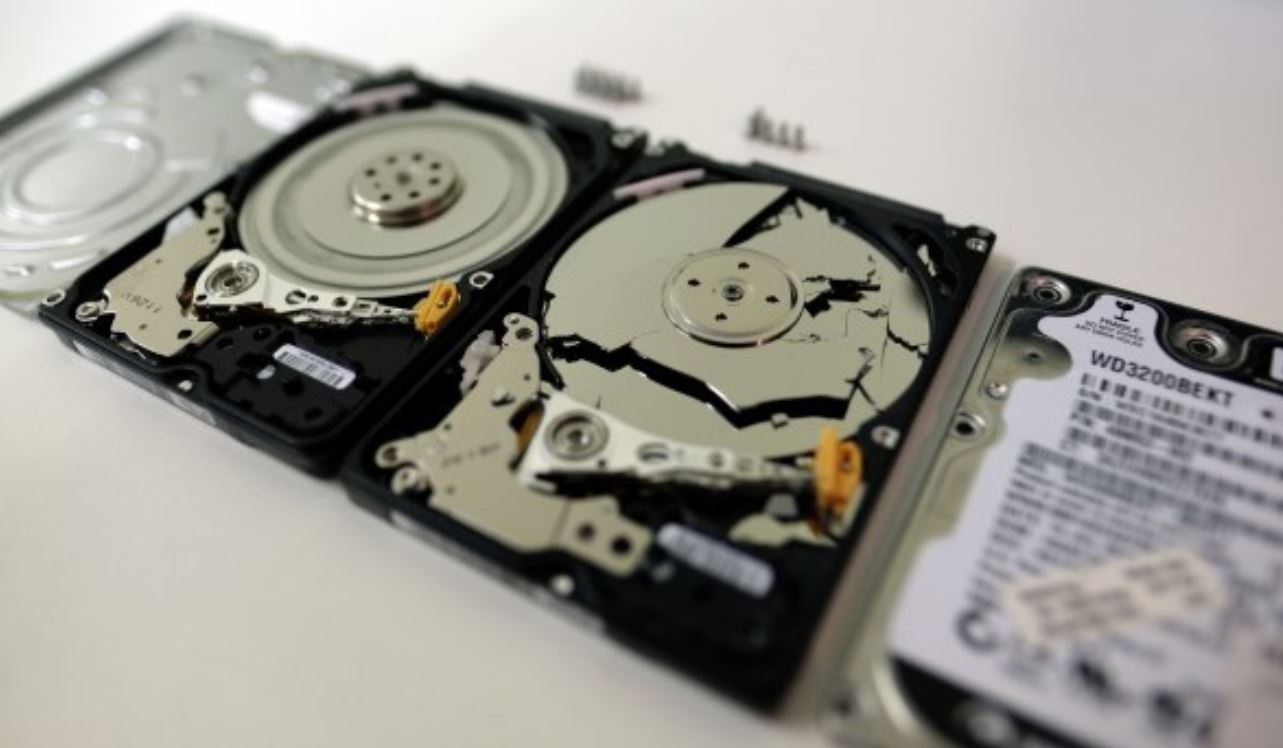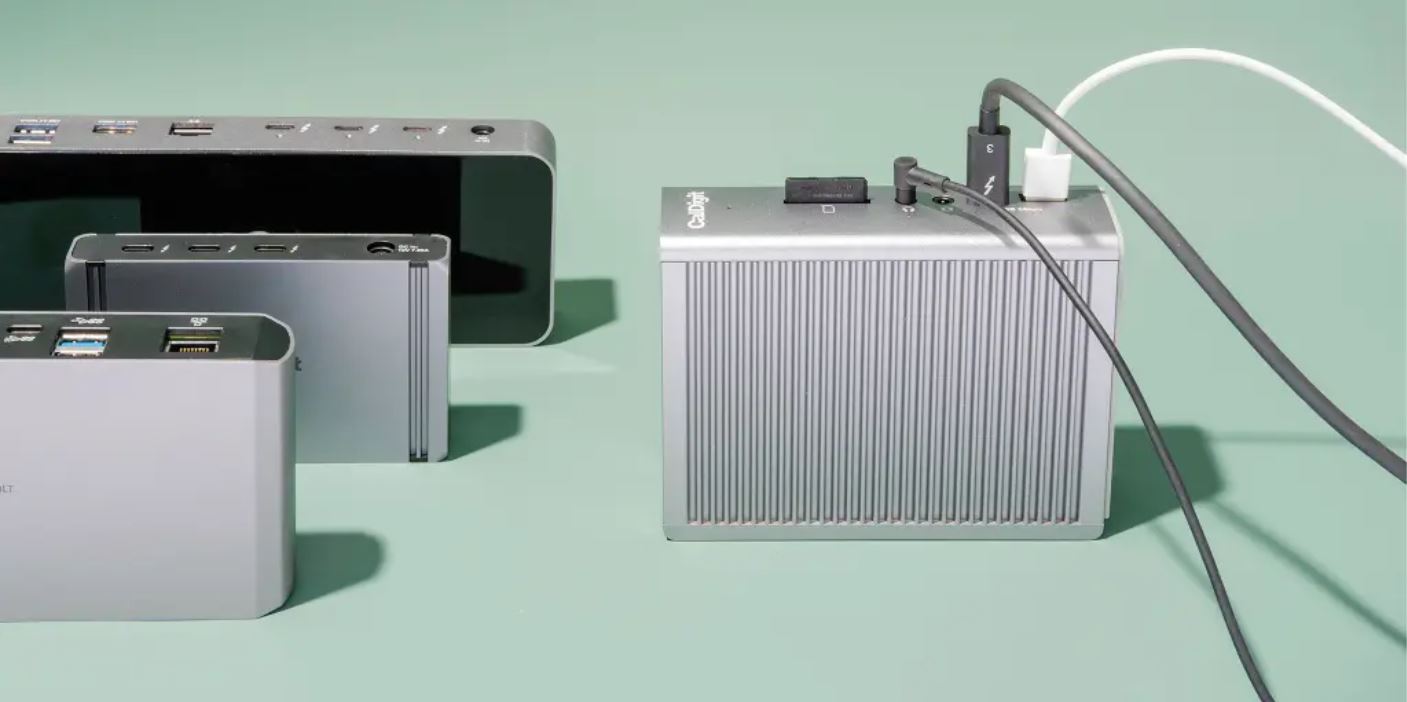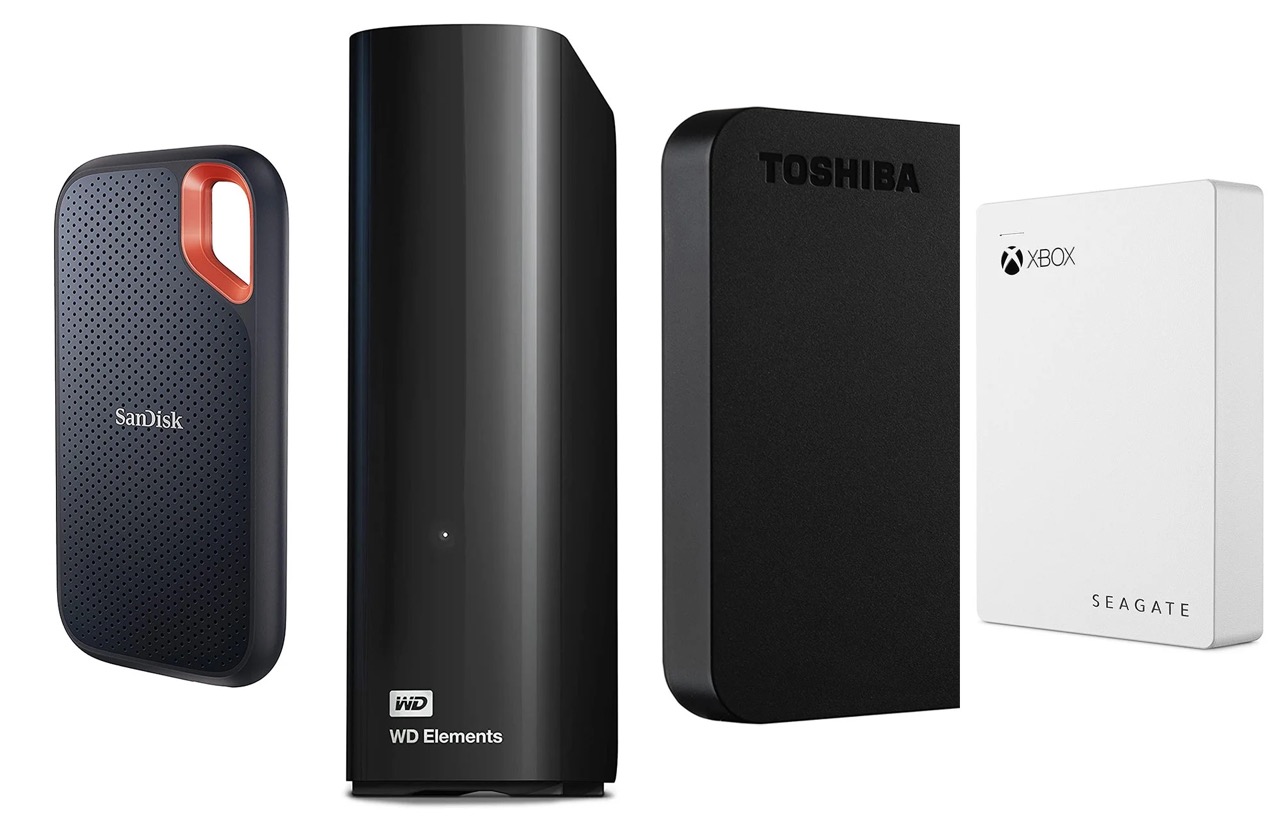Why Use an External Hard Drive?
An external hard drive is a crucial tool for anyone looking to optimize their computer’s performance and maximize storage capabilities. Whether you’re a professional or a casual user, there are several compelling reasons to invest in an external hard drive for your computer. Here are some key advantages:
More storage space: One of the primary reasons to use an external hard drive is to expand your storage capacity. As technology advances and file sizes increase, it’s easy to quickly fill up your computer’s internal storage. An external hard drive provides an additional, dedicated space to store your files, ensuring that your computer runs smoothly without constantly running out of space.
Faster and efficient performance: Another benefit of using an external hard drive is that it can significantly speed up your computer’s performance. By transferring large files, videos, or applications to the external drive, you free up space on your computer’s internal storage, allowing it to run more efficiently. This can lead to faster boot times, smoother multitasking, and an overall improved user experience.
Backup and data protection: Losing important files due to hardware failure, accidental deletion, or malware attacks can be devastating. An external hard drive provides a safe and reliable solution for backing up your important data. By regularly backing up your files onto the external drive, you can protect your information from potential loss and have peace of mind knowing that your valuable files are securely stored.
Portability and versatility: External hard drives are designed to be portable and easy to carry around. This makes them the ideal solution for professionals who need to work across multiple devices or users who frequently travel. You can easily connect the external drive to any computer or laptop, allowing you to access your files wherever you go. Additionally, some external drives offer compatibility with both Windows and Mac systems, providing flexible storage options.
Longevity and lifespan: By utilizing an external hard drive, you can increase the lifespan of your computer. As your computer’s storage remains uncluttered and less burdened with excess files, it can run more efficiently, reducing the strain on its internal components. This can lead to a longer lifespan for your computer, saving you money in the long run by delaying the need for an expensive hardware upgrade.
In summary, using an external hard drive offers numerous benefits, including increased storage space, improved performance, data protection, portability, and longevity for your computer. Whether you’re a professional looking for additional storage or a casual user in need of a reliable backup solution, incorporating an external hard drive into your computing setup is a wise investment.
Choosing the Right External Hard Drive
When it comes to selecting an external hard drive, there are a few key factors to consider to ensure you choose the right one for your needs. Here are some important considerations to keep in mind:
Storage capacity: The first thing you’ll want to determine is the amount of storage space you require. Consider the types of files you plan to store and estimate how much space they will take up. It’s always a good idea to choose a drive with a larger capacity than you currently need to accommodate future file growth.
Connection type: External hard drives generally come with various connection options, including USB, Thunderbolt, eSATA, and FireWire. USB connections are the most common and widely compatible. However, if you require faster data transfer speeds, consider a drive with Thunderbolt or eSATA connections.
Hard drive type: External hard drives typically come in two types: HDD (hard disk drive) and SSD (solid-state drive). HDDs offer larger storage capacities at a lower cost, but they are bulkier and slower than SSDs. SSDs, on the other hand, are more compact, faster, and more durable, but they come at a higher price per gigabyte. Consider your needs and budget when choosing between HDD and SSD.
Portability: If you plan to use your external hard drive on the go or while traveling, consider its size, weight, and durability. Look for a compact and lightweight drive that can withstand occasional bumps or drops. Portable drives often come with features like shock resistance or rugged casings for added protection.
Backup software: Some external hard drives come bundled with backup software, making it easy to schedule automatic backups of your important files. This can be a valuable feature for those who want a seamless and hassle-free backup process. Check if the drive you are considering includes backup software or if it is compatible with third-party backup applications.
Brand reputation and customer reviews: Do some research on different external hard drive brands and read customer reviews to gauge their reliability and performance. Look for brands that have a solid reputation for producing high-quality drives and providing reliable after-sales support.
Price: Last but not least, consider your budget when choosing an external hard drive. Prices can vary significantly depending on the capacity, brand, and features of the drive. Determine how much you are willing to spend and find a balance between the features you require and the price you can afford.
In summary, choosing the right external hard drive involves considering factors such as storage capacity, connection type, hard drive type, portability, backup software, brand reputation, customer reviews, and price. By carefully evaluating these factors, you can select an external hard drive that meets your storage needs, performance requirements, and budget, ensuring a seamless and efficient computing experience.
Backing Up Your Computer
Backing up your computer is a crucial step in ensuring the safety and security of your important files and data. With the help of an external hard drive, you can easily create backups and avoid the devastating consequences of data loss. Here’s how to effectively back up your computer:
Select a backup method: There are several backup methods you can choose from, depending on your needs and preferences.
- Manual backup: This involves manually copying and pasting specific files or folders from your computer to the external hard drive. While it provides control over what files are backed up, it can be time-consuming and may require regular manual updates.
- Scheduled backup: Many external hard drives come with backup software that allows you to schedule automatic backups at specified times or intervals. This ensures that your files are regularly and consistently backed up without you having to remember to do it.
- Cloud backup: Cloud storage services, such as Google Drive or Dropbox, offer the convenience of automatic backups to the cloud. These services upload your files to secure servers, keeping them safe and easily accessible from any device with an internet connection.
Choose your backup frequency: Determine how often you should back up your computer based on the importance of your files and the frequency of changes or updates. For critical files or those that are frequently modified, consider more frequent backups, such as daily or weekly. For less critical files, monthly backups may suffice.
Organize your files: Before backing up your computer, take the time to organize your files and folders. Create a logical structure that makes it easy to find and retrieve specific files when needed. This will simplify the backup process and ensure that all your important files are included in the backup.
Encrypt sensitive files: If you have sensitive or confidential files on your computer, consider encrypting them before backing them up to the external hard drive. Encryption adds an extra layer of security, ensuring that your files cannot be accessed by unauthorized individuals even if the external hard drive falls into the wrong hands.
Test your backups: It’s crucial to regularly test your backups to ensure that your files are properly backed up and can be restored if needed. Perform occasional trial restores to verify the integrity of your backups and confirm that you can access and retrieve your files without any issues.
Store your external hard drive securely: Keep your external hard drive in a safe and secure location to protect it from theft, damage, or accidental loss. Consider using a fireproof and waterproof safe or a locking drawer to store the drive when not in use.
Incorporating regular backups into your computer routine is essential for safeguarding your valuable files and data. By using an external hard drive and following these backup guidelines, you can have peace of mind knowing that your files are protected and easily recoverable in case of any unforeseen events.
Transferring Files to the External Hard Drive
Transferring files to an external hard drive is a straightforward process that allows you to free up space on your computer’s internal storage and ensure the safety of your important data. Here’s how you can easily transfer files to an external hard drive:
Connect the external hard drive: Start by plugging the external hard drive into an available USB port on your computer. Ensure that the drive is securely connected and recognized by your computer before proceeding.
Locate the files you want to transfer: Open the file explorer or finder on your computer and navigate to the files or folders you want to transfer to the external hard drive. Use the search function or browse through the directory structure to locate the specific files or folders.
Select the files to transfer: Once you have located the files or folders, you can select them by either clicking and dragging your mouse over the desired files or using the keyboard shortcuts (Ctrl or Command + A) to select all files within a folder.
Copy or move the selected files: Right-click on the selected files and choose the “Copy” option to create a duplicate of the files on the external hard drive, while retaining the original files on your computer. Alternatively, you can choose the “Cut” option to move the files directly to the external hard drive, removing them from your computer’s internal storage.
Navigate to the external hard drive: Open another file explorer or finder window and locate the external hard drive. It is typically listed as a separate drive letter or volume on your computer.
Paste the files onto the external hard drive: Right-click within the external hard drive window and choose the “Paste” option to transfer the selected files from your computer to the external hard drive. Wait for the transfer process to complete, which may take some time depending on the size and number of files being transferred.
Verify the successful transfer: After the file transfer is complete, double-check that the files are properly transferred by navigating to the external hard drive and confirming that the files are present and accessible. Check a few random files to ensure their integrity and functionality.
Safely remove the external hard drive: Before unplugging the external hard drive from your computer, make sure to safely eject or disconnect the drive to prevent data corruption. Follow the proper procedure for disconnecting the drive, which may involve clicking on an eject icon or using the “Safely Remove Hardware” feature in your operating system.
Transferring files to an external hard drive is a simple and effective way to free up space on your computer and keep your important data secure. By following these steps, you can easily and safely transfer your files to an external hard drive, ensuring that you have ample storage and peace of mind knowing that your files are backed up.
Setting Up Your Computer to Use the External Hard Drive
Before you can fully utilize your external hard drive, you need to set up your computer to recognize and effectively use the drive. Follow these steps to get your computer ready for seamless integration with the external hard drive:
Check compatibility: Ensure that your computer’s operating system is compatible with the external hard drive you have purchased. Most drives are compatible with both Windows and Mac systems, but it’s crucial to verify compatibility before proceeding.
Update your operating system: It’s always a good idea to ensure that your computer’s operating system is up to date. Check for any available updates and install them before connecting the external hard drive. Operating system updates often include important bug fixes and performance improvements.
Connect the external hard drive: Use the appropriate cable to connect the external hard drive to an available USB port on your computer. Ensure a secure connection and wait for your computer to detect the drive.
Follow on-screen instructions: Depending on your operating system, you may see some on-screen prompts or notifications regarding the newly connected external hard drive. Follow any prompts and instructions provided by your operating system to set up or configure the drive.
Format the external hard drive: In some cases, you may need to format the external hard drive before you can start using it. Formatting prepares the drive for use by establishing a file system compatible with your operating system. Be aware that formatting erases all existing data on the drive, so make sure to back up any important files before proceeding.
Create a new partition: If the external hard drive has a large capacity, you may want to create multiple partitions to better organize your data. Partitions act as separate storage spaces on the drive, allowing you to allocate specific sections for different purposes or users.
Assign a drive letter or name: Once the external hard drive is connected and formatted, you may have the option to assign a specific drive letter or name to the drive. This can be useful for easy recognition and access in the future.
Configure automatic backup options: If your external hard drive comes with backup software, take the time to configure automatic backup options. Set up regular backups to ensure that your important files are continuously protected and up to date.
Test the drive: Before relying on the external hard drive for important tasks, it’s advisable to test its performance and functionality. Copy a few files to the drive and access them to ensure smooth operation and proper integration with your computer.
Set default save locations: To maximize the efficiency of your external hard drive, consider setting it as the default save location for certain types of files. For example, you can choose to save your documents, photos, or videos directly to the external drive to keep your computer’s internal storage free.
By following these steps, you can set up your computer to effectively use the external hard drive. This ensures seamless integration, optimal performance, and easy access to your files. Take the time to configure your settings and make the most of the additional storage and backup capabilities provided by the external hard drive.
Moving Files from Your Computer to the External Hard Drive
Transferring files from your computer to an external hard drive is a straightforward process that allows you to free up space on your computer’s internal storage and keep your important data safe and secure. Here’s a step-by-step guide on how to move files to the external hard drive:
Connect the external hard drive: Start by connecting the external hard drive to an available USB port on your computer. Ensure that the drive is securely connected and recognized by your computer before proceeding.
Locate the files you want to move: Open the file explorer or finder on your computer and navigate to the files or folders that you want to move to the external hard drive. Use the search function or browse through the directory structure to locate the specific files or folders.
Select the files to move: Once you have located the files or folders, you can select them by either clicking and dragging your mouse over the desired files or using keyboard shortcuts (Ctrl or Command + Click) to select multiple files or folders.
Copy or cut the selected files: Right-click on the selected files and choose the “Copy” option to create a duplicate of the files on the external hard drive while retaining the original files on your computer. Alternatively, you can choose the “Cut” option to move the files directly to the external hard drive, removing them from your computer’s internal storage.
Navigate to the external hard drive: Open another file explorer or finder window and locate the external hard drive. It is typically listed as a separate drive letter or volume on your computer.
Paste the files onto the external hard drive: Right-click within the external hard drive window and choose the “Paste” option to move the selected files from your computer to the external hard drive. Wait for the transfer process to complete, which may take some time depending on the size and number of files being moved.
Verify the successful transfer: After the files have been moved, double-check that they are properly transferred by navigating to the external hard drive and confirming that the files are present and accessible. Open a few random files to ensure their integrity and functionality.
Safely remove the external hard drive: Before unplugging the external hard drive from your computer, make sure to safely eject or disconnect the drive to prevent data corruption. Follow the proper procedure for disconnecting the drive, which may involve clicking on an eject icon or using the “Safely Remove Hardware” feature in your operating system.
Moving files from your computer to an external hard drive is a simple and effective way to free up space on your computer’s internal storage while ensuring that your important data is backed up and easily accessible. By following these steps, you can safely and efficiently transfer your files to the external hard drive, providing you with ample storage space and peace of mind.
Tips for Maintaining an External Hard Drive
An external hard drive is a valuable tool for storing and accessing your important files. To ensure its longevity and optimal performance, it is important to maintain and care for it properly. Here are some essential tips for maintaining your external hard drive:
Handle with care: Treat your external hard drive with caution and avoid dropping, banging, or exposing it to extreme temperatures. Even though most modern external drives are built to withstand some degree of shock, rough handling can still cause damage to the delicate internal components.
Keep it in a safe and stable location: Store your external hard drive in a secure and stable location to minimize the risk of physical damage. Avoid placing heavy objects on top of it or exposing it to excessive vibrations as these can affect its performance and potentially lead to data loss.
Protect from power surge or voltage fluctuations: Power surges or sudden voltage fluctuations can damage the circuitry of your external hard drive. To protect it, consider using a surge protector or an uninterruptible power supply (UPS) that provides power regulation and surge protection.
Regularly back up your data: Even though an external hard drive itself is a form of backup, it is still important to have an additional backup of your important files. Create redundant backups by periodically copying your external hard drive’s contents to another storage device or utilizing cloud storage services.
Keep it clean: Dust and debris can accumulate on the surface of your external hard drive, potentially impacting its performance. Regularly clean the exterior using a soft, lint-free cloth and make sure to remove any dust or particles that may have settled on the connectors.
Scan for viruses and malware: Just like your computer’s internal storage, your external hard drive can also be vulnerable to viruses and malware. Regularly scan both your computer and the external drive to detect and remove any potential threats that may compromise your data.
Eject the drive properly: Always follow the correct procedure to safely eject or disconnect the external hard drive from your computer. This ensures that all pending read/write operations are completed and reduces the risk of data corruption or loss.
Avoid sudden disconnections: Do not unplug or disconnect your external hard drive while it is in use or transferring data. Abrupt disconnections can lead to data corruption or damage to the drive’s file system. Safely eject the drive using the “Eject” option provided by your operating system before physically disconnecting it.
Update firmware and software: Check for firmware or software updates for your external hard drive periodically. These updates often include performance improvements, bug fixes, and added features that can enhance the functionality and reliability of the drive.
Monitor for signs of failure: Keep an eye on any unusual sounds, slow performance, or error messages that may indicate a potential drive failure. If you notice any of these signs, consider backing up your data immediately and contacting a professional for assistance.
By following these tips, you can ensure the longevity and optimal performance of your external hard drive. Regular maintenance and care will not only protect your important files but also extend the lifespan of your valuable storage device.
Frequently Asked Questions
Here are some commonly asked questions about using an external hard drive:
1. Can I use my external hard drive on multiple computers?
Yes, you can use an external hard drive on multiple computers as long as they have compatible ports (e.g., USB). Simply connect the drive to the computer you want to use it with, and you’ll be able to access your files.
2. Can I use my external hard drive with both Windows and Mac computers?
Many external hard drives are compatible with both Windows and Mac computers. However, some drives may require reformatting to work with a specific operating system. Check the specifications of your external hard drive to ensure compatibility before use.
3. How do I safely disconnect my external hard drive?
Before unplugging your external hard drive, it’s important to safely eject or disconnect it to prevent data corruption. On Windows, use the “Eject” option by right-clicking the drive in the file explorer and selecting “Eject.” On Mac, drag the drive icon to the Trash bin to eject it properly.
4. Can I use an external hard drive as my primary storage?
While it is possible to use an external hard drive as your primary storage, it is generally recommended to use it as a supplementary storage device. Internal hard drives have faster read and write speeds, so they are better suited for running software and operating systems.
5. How often should I back up my data on the external hard drive?
The frequency of backup depends on the importance and frequency of changes to your files. It is advisable to back up your files regularly, especially those that are critical or frequently updated. Set a schedule that works for you, whether it’s daily, weekly, or monthly.
6. What should I do if my external hard drive stops working?
If your external hard drive stops working, try connecting it to another computer or using a different USB cable. If it still doesn’t work, there may be a hardware failure. In such cases, it is recommended to consult a professional data recovery service for assistance.
7. Can I use my external hard drive to play media on my Smart TV?
Many Smart TVs support USB ports, allowing you to connect and play media files from an external hard drive. Refer to your TV’s user manual to ensure compatibility and follow the instructions for accessing the files from your external drive on your TV.
8. How do I ensure the security of my files on the external hard drive?
To ensure the security of your files on the external hard drive, consider encrypting sensitive files or using password protection. You can also employ additional security measures, such as regular malware scans, to protect your data from potential threats.
These are just a few of the frequently asked questions about using an external hard drive. If you have any more specific concerns or questions, consult the user manual provided with your external hard drive or seek assistance from the manufacturer’s customer support.







